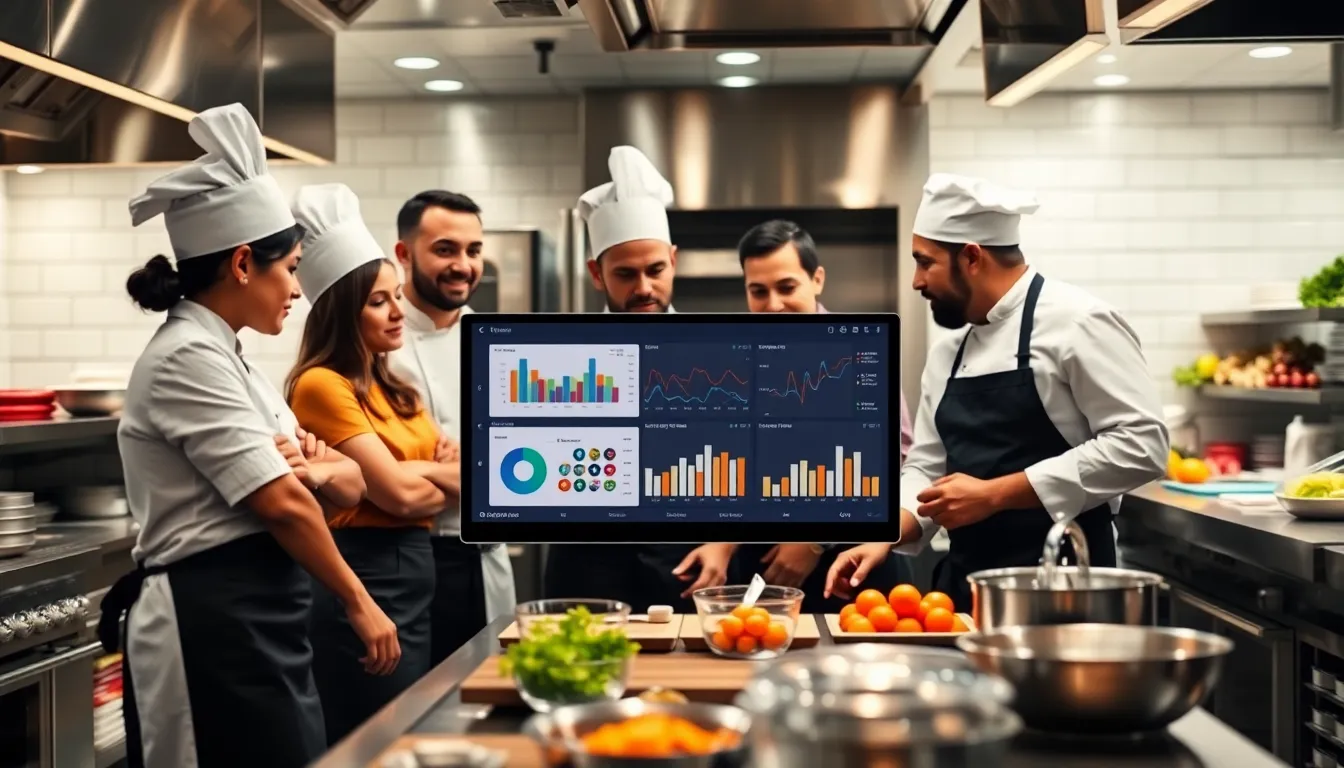
In the bustling world of culinary arts, managing a kitchen is no small feat. Imagine juggling a flaming sauté pan, while simultaneously keeping tabs on inventory, orders, and staff schedules, sounds chaotic, right? Enter kitchen management software, the superhero of the kitchen realm. It’s not a magic wand, but it sure simplifies operations, saves time, and helps chefs reclaim their sanity. Let’s jump into how this software can transform kitchens from chaos to culinary bliss.
Kitchen Management Software

At its core, kitchen management software is designed to streamline and automate the myriad of tasks that busy kitchens face daily. From tracking inventory to managing orders and optimizing workflows, this software acts as a comprehensive solution for culinary operations.
But what exactly does it entail? This type of software can cover various functions, including inventory management, recipe costing, menu engineering, staff scheduling, and reporting, providing a holistic view of kitchen performance. It’s like having an all-seeing oracle that helps chefs and restaurant managers make informed decisions. No longer will meal prep be a guessing game, this software organizes everything at a glance.
Key Features of Kitchen Management Software
When looking for the right kitchen management software, there are several features that should be on the radar. Here’s what makes this software indispensable:
Inventory Management
Keeping track of what’s in stock, what’s about to run out, and when to reorder ingredients is vital. This feature helps avoid waste and ensures that the kitchen is always prepared.
Recipe Management
Every great dish begins with a great recipe. A good kitchen management system allows for easy access to recipes, adjusts portions automatically, and calculates ingredient costs efficiently.
Order Management
This tool streamlines order processing, coordinating between the kitchen and dining area. It ensures that orders are fulfilled quickly and accurately, which boosts customer satisfaction.
Staff Scheduling
Managing shifts can be a challenging job. Software that includes scheduling capabilities makes assigning shifts and managing staff availability simple and efficient.
Nutritional Analysis
For those focused on health trends, having the capability to analyze the nutritional content of meals is a valuable asset.
Benefits of Using Kitchen Management Software
Employing kitchen management software offers several key advantages that can elevate a business. Here’s a quick rundown of the benefits:
Streamlined Operations
With all the tools centralized in one place, operations become more efficient. No more scrambling through stacks of paper or software switches.
Reduced Food Waste
By keeping track of inventory and usage rates, it helps in making smarter purchasing decisions, eventually reducing waste and saving money.
Enhanced Team Communication
With digital order management and staff scheduling, communication improves drastically, promoting teamwork in high-pressure environments.
Improved Profitability
By giving insights into food costs and waste, kitchens can maximize their profit margins by refining menu items and pricing strategies.
Time Savings
Automation of repetitive tasks allows staff to focus more on cooking and less on paperwork, creating a smoother kitchen flow.
Types of Kitchen Management Software Solutions
There are various types of kitchen management software solutions available to suit different needs:
Standalone Tools
These focus on specific areas like inventory management or recipe costing. They can be great for small businesses wanting to tackle specific issues without going all-in.
Comprehensive Suites
These offer a full range of functions, perfect for larger establishments seeking complete visibility and control over their kitchen operations.
Cloud-Based Solutions
With cloud technology, kitchen management software can be accessed from anywhere. This option is perfect for multi-location establishments or those wanting flexibility.
Mobile-Friendly Apps
For kitchen teams on the go, mobile-enabled software provides convenience, allowing staff to manage tasks directly from their smartphones or tablets.
How to Choose the Right Kitchen Management Software
Selecting the right software requires careful consideration of several factors:
Identify Your Needs
What problems does the kitchen currently face? Understanding specific needs helps tailor the search for software.
Scalability
Choose software that can grow with the business. A solution that accommodates increased demand will save future headaches.
User-Friendliness
The best systems are intuitive and easy for staff to learn quickly. A complicated interface can lead to frustration.
Customer Support
Having reliable technical support ensures that any issues can be addressed promptly, minimizing downtime.
Budget
Evaluate what the business can afford. Many providers offer tiered pricing based on features so that kitchens can find an appropriate fit.
Integration with Other Restaurant Systems
Integrating kitchen management software with other restaurant systems can create a seamless operation. Utilizing POS systems, for instance, allows for accurate real-time order tracking and inventory updates.
Plus, linking with accounting software can provide insights into financial health, while connections with scheduling tools can further enhance staff management. The more the systems communicate, the more efficient the overall operation becomes.
Best Practices for Implementing Kitchen Management Software
Successfully implementing kitchen management software requires strategic steps:
Training Staff
Invest time in training personnel on the new system to ensure everyone is on board and comfortable with the technology.
Set Clear Goals
Define what success looks like before rolling out the software. Setting measurable objectives can help gauge effectiveness over time.
Monitor Usage
Keep an eye on how staff utilizes the software, this will help identify any areas needing reinforcement or adjustment.
Seek Feedback
Regularly solicit opinions from team members using the software. This input can guide future implementations or updates.


